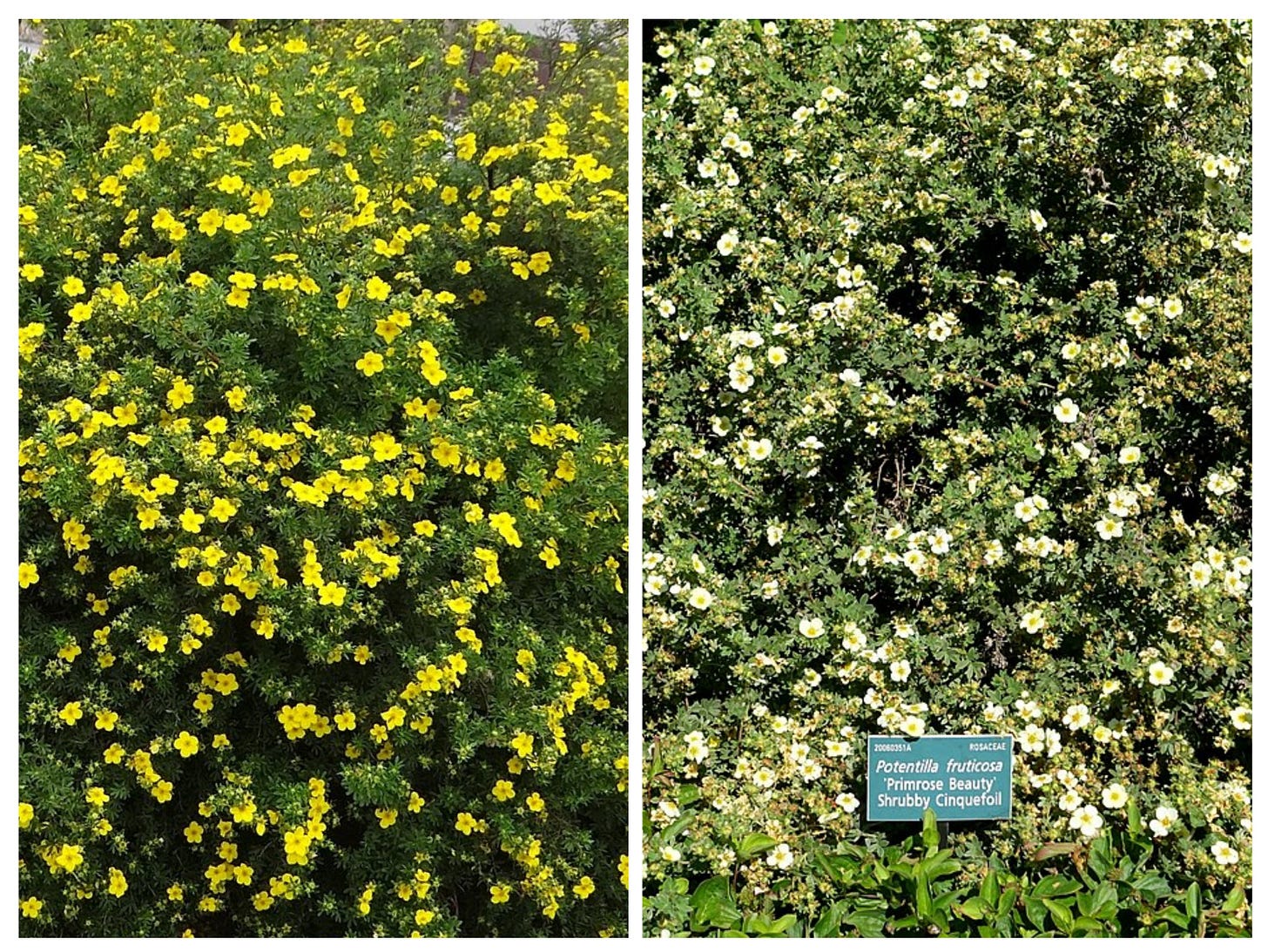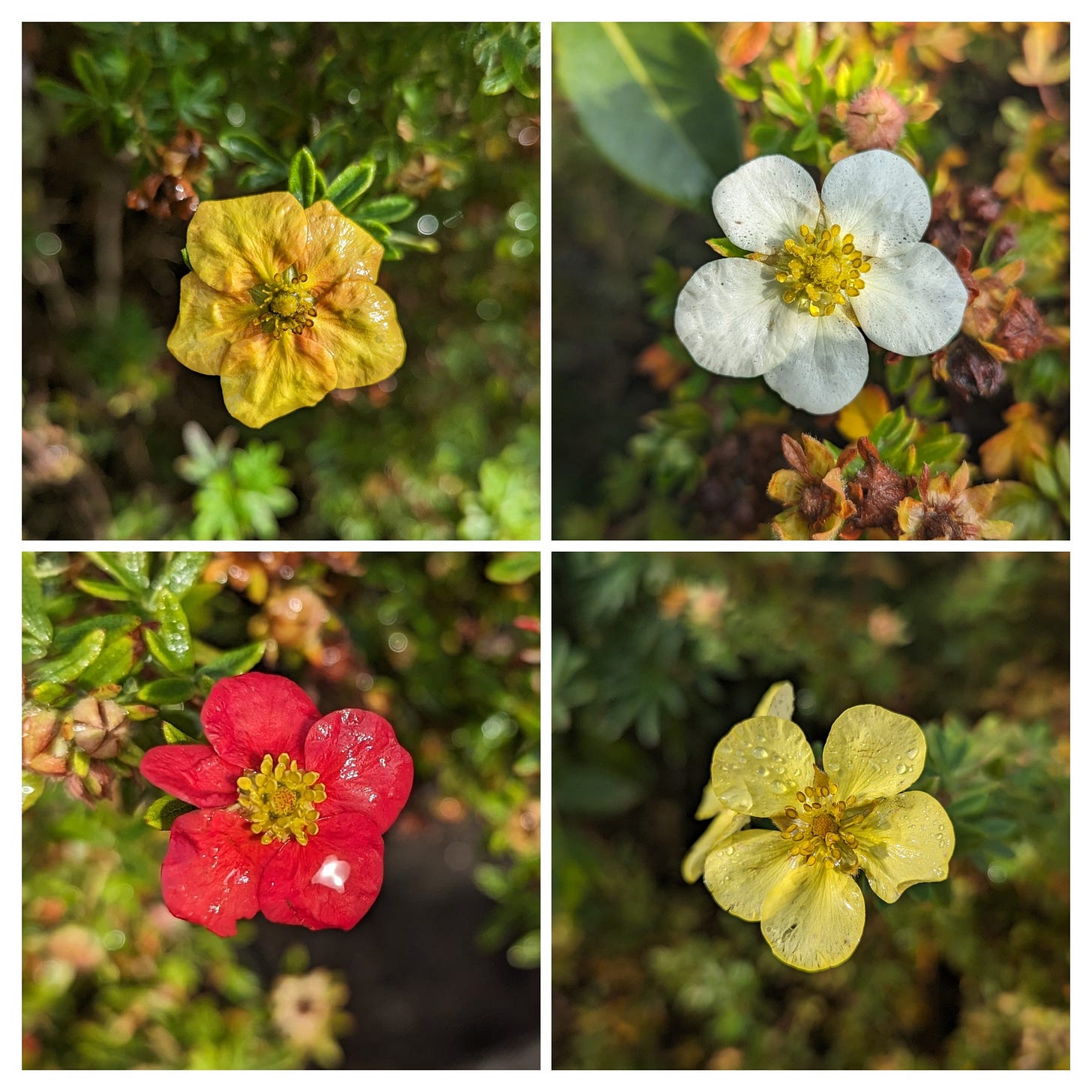Part of my series on hidden edible treasures of the ornamental plant world
Have you ever been rejected from a group because you’re different? The Shrubby Cinquefoil knows how you feel. Once known as Potentilla fruticosa, it was cast out about 20 years ago into a different genus. Now called Dasiphora fruticosa, I’m sure it looks back in longing at the Cinquefoil clique. It’s not like the Potentilla genus is particularly exclusive, there’s more than 502 species in this group. I can just see the poor Shrubby Cinquefoil, banging on the nightclub door after being thrown out by the taxonomist bouncer.
In many ways, the poor Shrubby Cinquefoil was always the odd duck. If you just squinted and grouped things by flower, you might place it with the other Cinquefoils, but the shrubby form and woody stems stick out like a sore thumb. So when some scientists came sniffing, P. fruticosa was dragged screaming to the reclassification guillotine.
If the Shrubby Cinquefoil was still in the Potentilla genus, it would be the poster child. My general rule of thumb is that you can correlate the popularity of a species to the number of cultivars that are commercially available. The RHS site has an impressive 104 cultivars on record. Decorative, hardy and easily propagated from cuttings, it’s no surprise really. They are also popular in the bonsai hobby scene for the same reasons.
Chances are, you’ve got some D. fruticosa in your neighbourhood. I happened to plant some in my front garden way before the ethnobotany bug bit me.
If the popularity amongst ornamental gardeners wasn’t enough, it is sometimes analysed by scientists with other Potentilla species who missed the outcast memo. Head to head against other Potentilla post childs, one group of scientists found that it contained the highest concentration of anticariogenic compounds (stuff that fights dental cavities): Shrubby Cinquefoil Mouthwash™ anyone?
Teeth aside, there is evidence that D. fruticosa extract is just generally anti-microbial (effective against different types of bacteria and fungi).
Of course, our ancestors were no slouches when it came to using herbal remedies. To them, these plants would just be remedies - there would be no modern/herbal remedy divide.
The Tibetans have a tradition of using Shrubby Cinquefoil to treat a whole slew of afflictions, including but not limited to inflammations, wounds, certain cancers, diarrhoea and diabetes.
The Mongolians use the leaves of the Shrubby Cinquefoil as a tea substitute, and to bring things back to “modern” day, a few hungry scientists used the same leaves as a herb in fermented sausage.
With all this going for Dasiphora fruticosa, perhaps it is the rest of the Cinquefoil that should be rolling out the red carpet to welcome their outcast cousin back to the fold.
Hold your head up high, Shrubby Cinquefoil.

Final Thoughts
What started out as a casual Wikipedia rabbit hole opened my eyes to the under appreciated qualities of the Shrubby Cinquefoil. Hardy, easily available and propagated, with potent medicinal properties and a couple of edible properties as a frosting on top, what’s not to love?
Some reports have D. fruticosa hardy down to USDA zone 2, -50°F to -40°F (-45.6°C to -40°C)!
The next time you have a spot in your food forest, consider the Shrubby Cinquefoil.
Bibliography
The paper that reassigned Shrubby Cinquefoil to Dasiphora
Anti-dental cavity properties of D. fruticosa
General anti-microbial properties of D. fruticosa
Tibetan tradition of using Shrubby Cinquefoil to treat “inflammations, wounds, certain forms of cancer, diarrhoea, diabetes and other ailments”
Climates and soils that give the highest amount of medicinal compounds in D. fruticosa
Mongolian tradition of using the leaves of D. fruticosa as a tea substitute
Using Shrubby Cinquefoil as a herb in fermented sausage
Documented process to extract highly concentrated active compounds from D. fruticosa
A list of vernacular names for D. fruticosa





I've tried quite a few leaves from different plants. Tastes range from neutral to actually quite pleasant. The Kobold variety seems to be the most aromatic, with a soft, pine needle-like touch. Others are more like tormentill.
Great article! I think I have seen it in my neighborhood before!